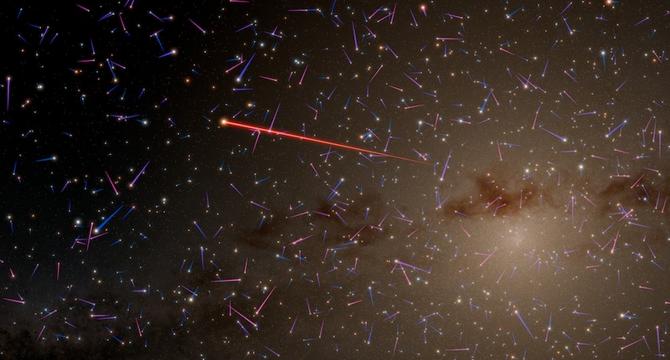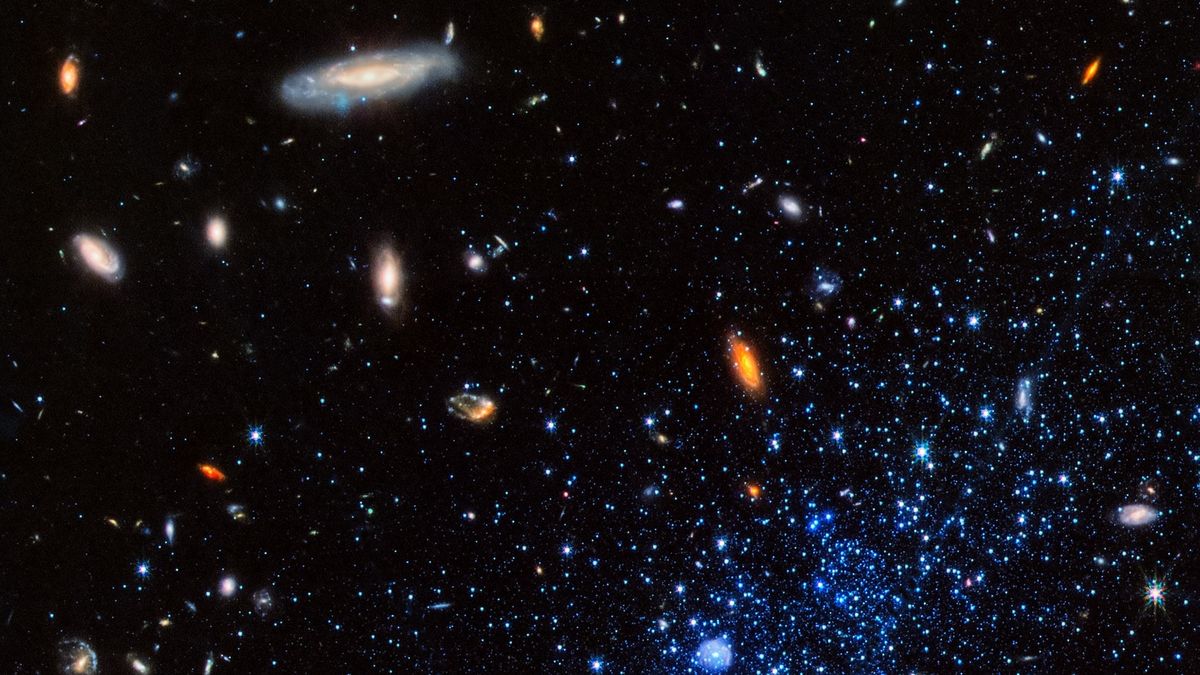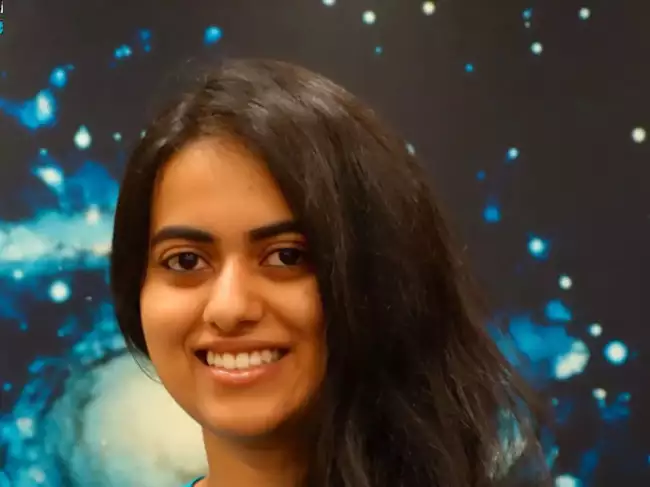Space News
Medium
239

Image Credit: Medium
Good morning guys!.
- STON.fi has integrated with Symbiosis, an automated market maker decentralized exchange (DEX) supporting over 35 networks.
- Symbiosis allows users to trade assets across multiple blockchains, including TON.
- The integration enables seamless transactions between networks, increasing trading volume through STON.fi's liquidity pools.
- This partnership is expected to bring enhanced liquidity, improved user experience, and increased adoption in the DeFi space.
Read Full Article
14 Likes
Brighter Side of News
9

Image Credit: Brighter Side of News
Intelligent life may not be that extraordinary in the universe
- A study challenges assumptions, suggesting intelligent life may be a natural outcome of planetary development, not improbable.
- Physicist Brandon Carter's 'hard steps' model proposed human-like intelligence as highly unlikely.
- New research counters Carter's theory, indicating Earth's condition required certain evolutionary milestones to occur.
- Life's evolution relates to planetary changes, with multiple 'windows of habitability' playing a crucial role.
- Researchers argue that intelligent life may not be a matter of sheer luck but of timing and environmental factors.
- Astrophysicists and geobiologists collaborate to study the origins of intelligent life and the presence of extraterrestrial civilizations.
- The study suggests that the emergence of intelligent life might not be as improbable as previously thought.
- If intelligence emerges naturally from planetary evolution, the likelihood of finding extraterrestrial civilizations increases.
- The new perspective provides a framework for searching for alien life based on planetary environments rather than random luck.
- This research may reshape humanity's understanding of its origins and its place in the universe as scientists explore the cosmos.
Read Full Article
Like
Earthsky
32

Image Credit: Earthsky
Why won’t the Blaze Star explode? (and how YOU can see it when it does)
- The Blaze Star is a binary system with a white dwarf and a red giant star, where the white dwarf periodically explodes every 80 years.
- Despite the powerful explosions, the white dwarf of the Blaze Star remains intact.
- Astronomers are still waiting for the Blaze Star to erupt, providing a unique opportunity for sky observers to witness a 'new star' in the night sky.
- Two known eruptions of the Blaze Star occurred on May 12, 1866, and February 9, 1946, approximately 80 years apart.
- The Blaze Star brightened and dimmed before its last eruption in 1946, leading to predictions of an eruption around 2024.
- The Blaze Star is a binary system, where the white dwarf accumulates material from the red giant and explodes periodically.
- The constellation Corona Borealis, where the Blaze Star resides, can be found between Arcturus and Hercules in the night sky.
- When the Blaze Star erupts, it is expected to reach an apparent magnitude of 2, comparable to the brightest star in Corona Borealis, Alphecca.
- The Blaze Star, located around 3,000 light-years away, will brighten the night sky significantly during its nova event.
- Observers are encouraged to familiarize themselves with the Northern Crown constellation to be prepared to witness the Blaze Star's eruption.
Read Full Article
1 Like
Earthsky
363

Image Credit: Earthsky
Lightning strikes on Earth can trigger electron showers
- A new study reveals that lightning strikes on Earth can lead to electron showers from the Van Allen radiation belts encircling the planet, occurring post-geomagnetic storms.
- The Van Allen radiation belts are high-energy particle regions circling Earth, with lightning being able to trigger electron showers into Earth's atmosphere.
- These high-energy particles are typically trapped thousands of kilometers away but may be dislodged by electromagnetic waves from lightning.
- The discovery of the Van Allen radiation belts happened during the early days of the space race with Explorer 1 detecting intense radiation levels near Earth.
- Two belts, the inner and outer radiation belts, surround Earth, containing high-energy electrons, protons, and ions, with the outer belt being more dynamic.
- Researchers revisited their understanding of Earth's inner radiation belt after unexpected observations showing high-energy electrons and their behaviors.
- Electromagnetic waves generated by lightning, like chorus waves, can influence the inner radiation belt, raising questions about electron presence and dynamics.
- Lightning-triggered electromagnetic waves interact with electrons in the inner radiation belt, connecting weather phenomena on Earth with those in space.
- The study's findings highlight the interconnected nature of Earth and space, showing how weather events and solar activity can affect radiation belts and electron behavior.
- Understanding these electron showers is crucial for spacecraft design and human safety in space as high-energy particles can harm equipment and individuals.
Read Full Article
21 Likes
Discover more
Earthsky
294

Image Credit: Earthsky
Speediest exoplanet found near Milky Way center?
- Astronomers have discovered a potentially speedy exoplanet system near the center of the Milky Way galaxy, consisting of a red dwarf star and a super-Neptune exoplanet, moving at 1.2 million miles per hour.
- The system was first found in 2011 and the findings were published in The Astronomical Journal on February 10, 2025.
- The discovery was made through a microlensing survey, where two possible scenarios were considered: a star with a planet or a rogue planet with a moon.
- Observations using data from the Keck Observatory and the Gaia satellite supported the theory of a star and planet in the system.
- The astronomers identified a low-mass red dwarf star around 24,000 light-years away, potentially orbiting a super-Neptune planet near the galactic bulge.
- There is a possibility that the exoplanet system could be moving even faster, potentially exceeding 1.3 million miles per hour and reaching escape velocity from the galaxy.
- Confirmation is still needed to establish the connection between the star and the 2011 microlensing signal.
- Future observations from NASA's Nancy Grace Roman Space Telescope will aid in detecting more high-velocity stars and planets.
- In 2014, sun-like stars moving fast enough to escape the galaxy were reported, and in recent years, other speedy stars moving in unusual directions have been found.
- Overall, this discovery represents one of the fastest exoplanet systems known, showcasing the remarkable speed at which celestial bodies can travel in our galaxy.
Read Full Article
17 Likes
Livescience
368

Image Credit: Livescience
Space photo of the week: James Webb telescope shocks scientists with image of ancient galaxy roaring back to life
- The Leo P dwarf galaxy, located 5.3 million light-years away in the constellation Leo, has amazed scientists with its image captured by the James Webb Space Telescope (JWST).
- Leo P is a pristine irregular dwarf galaxy that has remained unaffected by the influence of larger galaxies like the Milky Way and Andromeda.
- Previously, small isolated galaxies like Leo P were believed to have stopped forming stars after the cosmic era called "the Epoch of Reionization." However, the new observations reveal that Leo P unexpectedly reignited star formation after a few billion years.
- JWST will continue studying four other isolated dwarf galaxies to gather more information about how star formation has changed over time.
Read Full Article
22 Likes
Medium
400

Miracles at Various Shrines throughout the World(second drop) Part 2
- A young girl visited a shrine, prayed and made offerings in the hope of restoring her lost voice, which she believed was answered by Buddha.
- A story is shared about a person who believed a splinter of wood he bought, set in a ring and claimed to be a piece of the true cross, could heal his father's tuberculosis.
- These examples highlight the power of imagination, blind belief, and the conditioning of the mind to influence our subconscious responses.
Read Full Article
24 Likes
Medium
345

Biblical Accounts of the Use of the Subconscious Powers
- To make use of the creative power of thought, one must impress their subconscious mind with the desired concept.
- According to the Biblical technique, the key element is having faith in the manifestation of the desired idea.
- The Bible emphasizes that faith is essential, and one will receive according to their faith.
- Having faith means accepting the truth of the desired idea, disregarding rational and analytical thinking.
Read Full Article
20 Likes
Earthsky
82

Image Credit: Earthsky
See the zodiacal light in dark skies beginning around now
- The zodiacal light, visible around the March equinox, is a faint pyramid of light in the sky caused by sunlight reflecting off dust grains in the inner solar system.
- For those in the Northern Hemisphere, the zodiacal light can be seen in the west in the evening, while in the Southern Hemisphere, it is visible in the east before dawn.
- The best time to see the zodiacal light is in a moon-free sky, with spring being optimal for evening viewing and autumn for dawn viewing.
- The light is caused by dust grains circling the sun, possibly originating from Mars dust storms, and is most concentrated in the same plane as the planets in our solar system.
- Spring and autumn are prime times to observe the zodiacal light, with visibility varying based on the hemisphere and time of day.
- To see the zodiacal light, a dark sky location away from city lights is necessary, with the light being most prominent after dusk in spring and before dawn in autumn.
- The zodiacal light appears milky and can be visible for up to an hour after dusk or before dawn, and it lacks the rosy hues of true dusk or dawn.
- The best chances to see the zodiacal light are a few days after a full moon to a few days after a new moon, when the moon is less bright in the sky.
- The zodiacal light is a unique astronomical phenomenon that can be captured in photographs, showcasing its eerie and captivating nature in the night sky.
- Whether in the Northern or Southern Hemisphere, experiencing the zodiacal light is an opportunity to witness a celestial wonder that connects Earth to the broader solar system.
Read Full Article
4 Likes
Minis
1.4k

Image Credit: Minis
Elon Musk's Tesla Roadster: Starman's Incredible Journey through the Cosmos
- The Tesla Roadster is 71.6 million miles from Earth and 225.2 million miles from Mars in space.
- It has traveled over 3.19 billion miles around the Sun, completing approximately 4.16 orbits in about 557 days each.
- Achieved a hypothetical fuel economy of 25,340 miles per gallon.
- Starman, the mannequin driver would have listened to "Space Oddity" 629,551 times and "Is there Life On Mars?" 848,294 times.
- A telescope of 5,152 meters in diameter is required to resolve the Roadster from Earth.
- It has been 6 years, 4 months, 5 days, 7 hours since its launch.
Read Full Article
27 Likes
Minis
1.1k

Image Credit: Minis
There's a pick up in hiring activities in these sectors as per Naukri index, what about AI? Check Details
- According to Naukri's JobSpeak Index, March 2024 saw a 4% dip compared to the previous month, with an 11% correction year-on-year. However, certain sectors like oil and gas experienced a 22% increase in hiring.
- AI and machine learning roles witnessed a 12% rise in demand, particularly for ML engineers with an 82% YoY growth. Startups showed an 8% YoY growth despite funding challenges, with a notable 77% increase in software services hiring.
- Conversely, there was a decline in hiring in IT, BPO, and retail sectors by 16%, 6%, and 5% respectively. Pawan Goyal, Chief Business Officer of Naukri.com, expressed optimism for the Indian job market, citing positive trends ahead.
Read Full Article
26 Likes
Minis
320

Image Credit: Minis
PM unveils Gaganyaan mission crew. India's first manned mission in space.
- Prime Minister Narendra Modi announced the selection of four astronauts for India's inaugural human spaceflight mission, Gaganyaan.
- The astronauts chosen for the Gaganyaan mission include Group Captain Prasanth Balakrishnan Nair, Group Captain Ajit Krishnan, Group Captain Angad Pratap, and Wing Commander Shubhanshu Shukla.
- PM Modi met with the selected astronauts and presented them with Astronaut wings.
- The announcement marks a significant milestone in India's space exploration efforts through the Gaganyaan mission.
Read Full Article
19 Likes
Minis
907

Image Credit: Minis
Japanese space startup conducts groundbreaking test of cow dung-powered rocket
- Japanese space startup, Interstellar Technologies, has conducted a groundbreaking 10-second "static fire test" of its Cosmos engine, part of the 'Zero rocket,' utilizing liquid biomethane (LBM) derived from cow dung.
- This marks the first instance of testing LBM as rocket fuel, offering a potential green alternative. Developed with contributions from Tokyo University and JAXA Space Innovation, the innovative rocket engine significantly reduces manufacturing costs.
- Interstellar aims to use this technology to launch satellites into low-Earth orbit, addressing environmental concerns associated with traditional rocket launches. The successful test signals a promising future for sustainable space exploration and potential economic space tourism.
Read Full Article
16 Likes
Minis
955

Image Credit: Minis
Indian MIT graduate reveals she ‘knocked on 100s of doors’ to land a job at NASA
- Dr. Akshata Krishnamurthy, an Indian MIT graduate, shared her inspiring journey of perseverance in landing a prestigious job at NASA. Despite initial discouragement due to her foreign national status, she pursued her dream, earning a Ph.D. from MIT.
- Krishnamurthy knocked on hundreds of doors to secure a position at NASA, eventually contributing to space missions, including the Perseverance rover on Mars.
- Encouraging others, she emphasized the importance of self-belief and hard work. Holding a Master's in Aerospace Engineering and a Ph.D. from MIT, Krishnamurthy serves as a testament to the idea that no dream is too big or crazy with determination.
Read Full Article
15 Likes
Minis
989

Image Credit: Minis
60-year-old from Mysore becomes a billionaire after supplying parts to Chandraayan-3
- India becomes the fourth country to land on the moon's south pole, achieving this milestone with Chandrayaan-3.
- Billionaire and Kaynes Technology founder, Ramesh Kunhikannan, supplied electronic systems crucial to Chandrayaan-3's rover and lander.
- Kaynes' shares, already tripled since November 2022, surged 40% post the moon mission, elevating Kunhikannan's net worth to $1.1 billion.
- The company, a beneficiary of the "Make in India" program, sees significant revenue growth, tripling from $49 million in FY 2020 to an expected $208 million in FY 2024.
Read Full Article
9 Likes
For uninterrupted reading, download the app